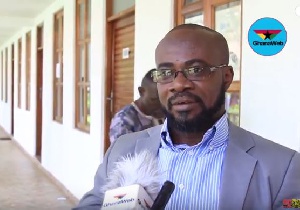 Dr Eric Daniel Ananga, lead researcher for British Council Employability Research
Dr Eric Daniel Ananga, lead researcher for British Council Employability Research
A lead researcher for British Council Employability Research; Dr Eric Daniel Ananga has stated that graduate youth unemployment in the country is a time bomb that can be a potential security threat to the state if not fixed immediately.
According to him, this can generate into something worse if society doesn’t take a critical look in addressing the problem which might make unemployed graduates fall prey to vigilante groups who will end up using them for their propaganda objectives. This he said the country is sitting on a time bomb and can explode at any time.
“We’ve had groups of unemployed graduates demonstrating in the country and it gives us an indication that this group is there and we should see how we can harness their energy and use it productively to contribute to society. But not just leave them because they are and I repeat a time bomb. If we don’t employ them, they are a bomb waiting to explode and one day they will overtake us”, Dr Ananga said.
Dr Ananga urged all stakeholders to come on board to discuss the way forward in absorbing the unemployed graduates in the country and also work together to find out how the various universities in the country can make relevant courses to the needs of society.
He also encouraged the various institutions in the country to train students that will develop their employability skills of graduates and also be able to create their own job when they complete.
2015 labour force report shows that currently the unemployment rate unemployment rate for Ghana is 11.9% and is particularly high among 15 to 24-year-olds (25.9%).
The unemployment rate is highest in the Upper West Region (18.4%) and lowest in the Brong Ahafo Region (8.4%).
Two-thirds (67.6%) of the population; 15 years and older are employed while 23.3 percent are outside the labour force.
About one-tenth (11.7%) of the employed population are underemployed.
Of this proportion, females account for slightly more than half (50.7%) while close to half (49.3%) are males.